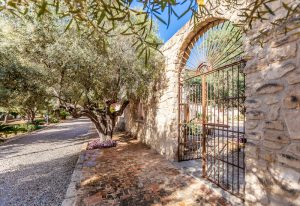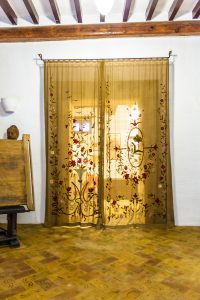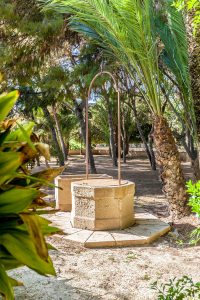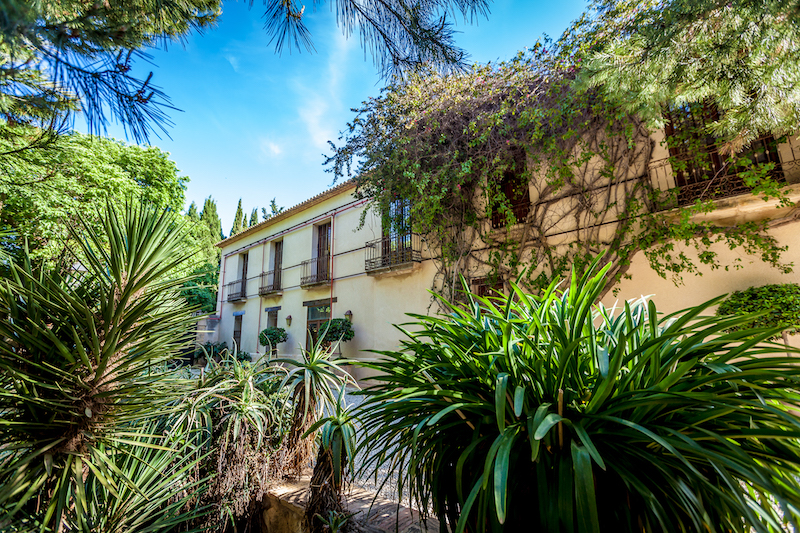The historic Huerta of Alicante was settled in a fertile and extensive plain surrounded by mountains, which over time covered an area of 30,660 tahúllas of improved irrigation land.
Over a thousand years ago, the Muslims cultivated these lands, completely transforming their landscape. They turned barren fields into fertile orchards. They devised a hierarchical system of canals, branches, sub-branches, and smaller dams, such as the Azud de Mutxamel.
During the feudal era, they incorporated the Azud de Sant Joan and the Gualeró irrigation canal into the Andalusian irrigation system, as well as new canals that would irrigate the areas of Monnegre, Sant Joan and Benimagrell, Santa Faz, and La Condomina with water.
From Sant Joan, a new branch was constructed in the main irrigation canal, known as the Maigmona or Benialí branch. Through the Maremoto sub-branch, the land and Finca Fidegüet were fertilized.

Since the late 15th century, and especially with the construction of the Tibi Dam, the Huerta de Alicante became the center of production for the famous Fondillón wine of Alicante.
And Finca Fidegüet was right in the heart of the Huerta de Alicante and the production of Fondillón.
The special characteristics of the soil, its proximity to the city of Alicante via the Xiprer road and Camí de L’Horta, its constant exposure to the sea breeze, and above all, its dry autumns and abundant sunshine made Fidegüet the perfect estate for cultivating Monastrell grapes.
This native and dominant grape variety in Alicante has the characteristic of ripening very late compared to other northern grapes that easily rot. The Monastrell grape reaches well into November with an abundant amount of sugars.
Fidegüet Estate has been producing Fondillón for centuries, and for this purpose, the grapes were harvested at the end of October. They were then spread out on canes to remove moisture before being pressed.

After three weeks, the wine would reach a level of 16 degrees of alcohol and 30 grams of sugar, resulting in a semi-sweet or “embocado” wine. After Christmas, it was placed in old American oak barrels for many years until it aged and turned amber in color.
All the families who owned Finca Fidegüet were dedicated to the production of Fondillón wine, which they exported through the port of Alicante, becoming the main source of income for the estate.
In Fidegüet, other typical products of the region were also cultivated: olive trees for oil, of which some centuries-old ones are still preserved in the main courtyard of the house, almond trees for the production of sweet Christmas nougat, carob trees for animal feed, fig trees, and a variety of vegetables such as tomatoes, melons, and fruit trees.

The estate had, like almost all large houses and defense towers in the huerta, a chapel, which has been lost over the years. However, the cellar has survived the passage of time and has been restored by the current owners.
Currently, visitors to Finca Fidegüet can enjoy a wonderful environment, the original pinewood, and the fully restored ancestral house and cellar that recalls and preserves the essence of a villa and stately home in the Huerta de Alicante.
